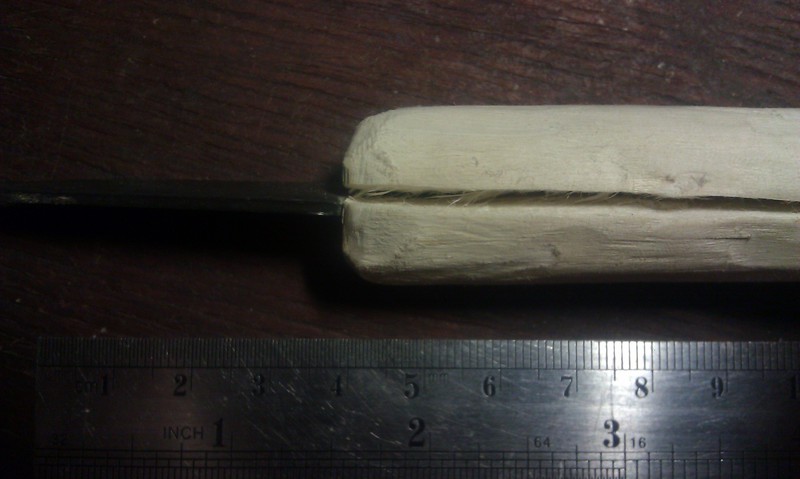Back in the middle of winter, I started making some knife handles for the pair of Brusletto knife blades I picked up last year.
I started by harvesting a length of Holly from the woods, that is a bit thicker, but not too much thicker than the handle I wanted to make. I then drilled out the hole for the blade, and managed to force the tang into the handle. I shaped the handle, removed the bark and was rather pleased with the little knife I had made.
By next morning tho, disaster. The wood had split the total length of the handle, right through from centre to edge. The other piece of wood I had for the second blade, that I had removed the bark from, and done the first stage of shaping ready to drill, has also split in the same fashion.

I thus started to wonder if it was a case of green wood drying far far far too quickly. I have a length of holly left over that I didn't use, it has a lovely straight section, between where a number of branches were. This straight bit, seems to be unsplit, but the bits either side of the knot/junction are split.
I would like to try again, and make a proper no split handle, and I must admit that I really like the Holly wood I have used. Is there a way I can make such a handle without it splitting? I was using the drill, then fill approach, rather than heating the tang and burning it in and risk losing the temper.
Thanks
Julia
I started by harvesting a length of Holly from the woods, that is a bit thicker, but not too much thicker than the handle I wanted to make. I then drilled out the hole for the blade, and managed to force the tang into the handle. I shaped the handle, removed the bark and was rather pleased with the little knife I had made.
By next morning tho, disaster. The wood had split the total length of the handle, right through from centre to edge. The other piece of wood I had for the second blade, that I had removed the bark from, and done the first stage of shaping ready to drill, has also split in the same fashion.

I thus started to wonder if it was a case of green wood drying far far far too quickly. I have a length of holly left over that I didn't use, it has a lovely straight section, between where a number of branches were. This straight bit, seems to be unsplit, but the bits either side of the knot/junction are split.
I would like to try again, and make a proper no split handle, and I must admit that I really like the Holly wood I have used. Is there a way I can make such a handle without it splitting? I was using the drill, then fill approach, rather than heating the tang and burning it in and risk losing the temper.
Thanks
Julia





